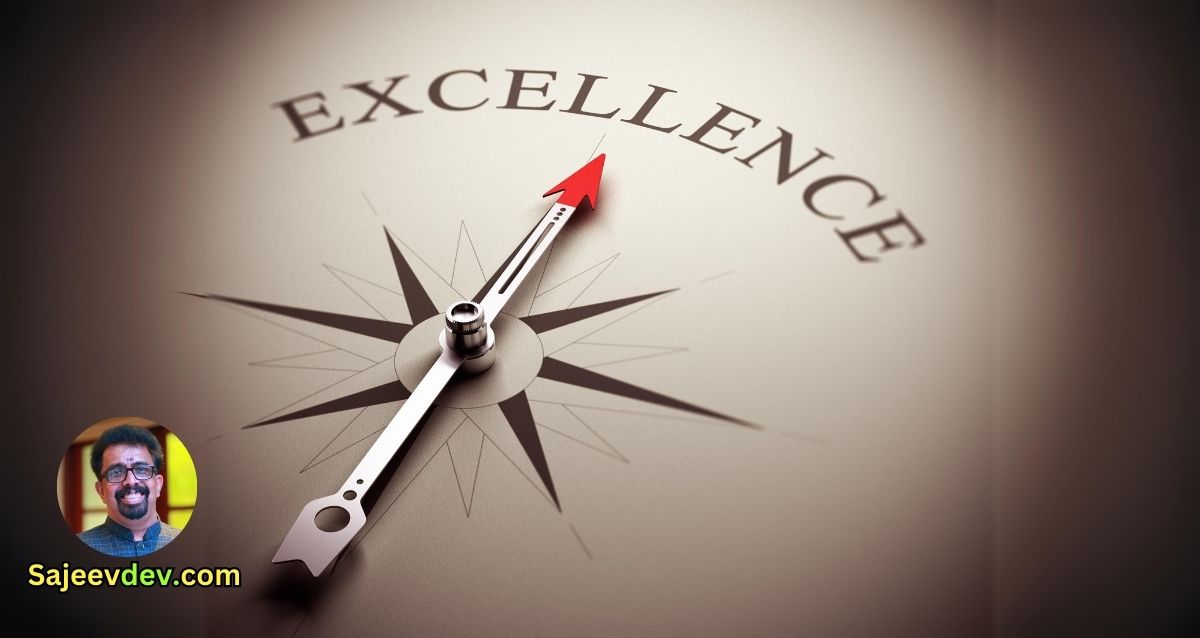The Illusion of Effortless Mastery
In the realm of excellence, mastery often appears effortless to the casual observer. This illusion is encapsulated in the famous quote, “If people knew how hard I worked to get my mastery, it wouldn’t seem so wonderful after all.” The glimmering performances of athletes, the seamless compositions of musicians, and the groundbreaking innovations of scientists frequently mask the intense dedication and relentless effort that underpin their achievements.
The purpose of this article is to peel back the layers and reveal the hidden effort, dedication, and sacrifices required to achieve true mastery. By delving into the realities behind attaining greatness, we aim to dismantle the myth of effortless success and offer a comprehensive understanding of the path to excellence. This exploration will highlight the rigorous training, disciplined practice, and enduring perseverance that are often overlooked when considering the end results of remarkable accomplishments.
As we embark on this journey, it is crucial to recognize that mastery is not a destination but a continuous process of growth and improvement. The road to excellence is paved with countless hours of practice, innumerable setbacks, and unwavering commitment. Through this lens, we can better appreciate the extraordinary efforts that transform potential into mastery, and understand that behind every effortless display of skill lies a profound and often unseen struggle for perfection.
The Myth of Natural Talent
In many fields, from sports to the arts to the sciences, there is a pervasive belief that mastery is largely a result of natural talent. This myth perpetuates the idea that success is inherently tied to an individual’s inborn abilities, overshadowing the substantial effort and dedicated practice required to achieve excellence. While it’s undeniable that some people may have a predisposition towards certain skills, attributing success solely to talent grossly underestimates the role of hard work and deliberate practice.
Consider the world of sports. Famous athletes like Michael Jordan and Serena Williams are often heralded as naturally gifted. However, their success stories are not merely tales of inherent ability but also of relentless dedication and practice. Michael Jordan, for instance, was famously cut from his high school basketball team, a setback that fueled his determination to improve. His subsequent rise to become one of the greatest basketball players in history is a testament to his extraordinary work ethic and commitment to honing his skills.
Similarly, in the arts, the narrative of natural talent often overshadows the grueling practice behind the scenes. Renowned musicians like Yo-Yo Ma and visual artists like Vincent van Gogh spent countless hours perfecting their craft. Yo-Yo Ma’s prodigious talent as a cellist is matched by his rigorous practice regimen and continuous learning. Vincent van Gogh, despite struggling with mental health issues, dedicated himself to mastering his technique, producing over 2,100 artworks in a decade through persistent effort.
The sciences, too, are rife with examples of individuals whose success was built on a foundation of hard work. Albert Einstein, often mythologized as a genius, faced numerous academic challenges and professional setbacks. His groundbreaking theories were the result of years of relentless inquiry, experimentation, and intellectual perseverance.
These examples illustrate that while natural talent may provide a starting point, it is the sustained effort, deliberate practice, and continuous learning that truly pave the way to mastery. By focusing solely on innate talent, we risk overlooking the hidden effort and determination that drive exceptional achievements. Recognizing the significant role of hard work not only provides a more accurate understanding of success but also inspires individuals to pursue their goals with dedication and resilience.
The Role of Perseverance
Perseverance plays a crucial role in the journey towards mastery, acting as the steadfast commitment to a goal despite encountering numerous obstacles and setbacks. While often conflated with persistence, perseverance embodies a deeper, more enduring commitment. Persistence implies a continual effort, but perseverance encompasses the resilience to maintain effort over a prolonged period, regardless of the difficulties faced.
Consider the example of Thomas Edison, whose journey to invent the light bulb was fraught with failures. Edison famously remarked, “I have not failed. I’ve just found 10,000 ways that won’t work.” His unwavering perseverance allowed him to eventually succeed, transforming the world with his invention. Similarly, J.K. Rowling, the author of the Harry Potter series, faced twelve rejections from publishers before her manuscript was finally accepted. Her perseverance in the face of repeated disappointments exemplifies the importance of steadfast determination in achieving mastery.
Perseverance enables individuals to navigate the inevitable challenges that arise on the path to excellence. It fosters a mindset that views failures and setbacks not as insurmountable barriers but as opportunities for growth and learning. This mental resilience is essential for overcoming obstacles and remaining focused on long-term goals.
Moreover, perseverance nurtures an individual’s ability to adapt and innovate. When confronted with challenges, those who persevere are more likely to seek alternative solutions and approaches, refining their skills and knowledge in the process. This continuous improvement is a hallmark of true mastery.
Ultimately, the journey to mastery is seldom straightforward. It is the perseverance to push forward, despite the hurdles, that distinguishes those who achieve excellence from those who falter. By embracing perseverance, individuals can remain committed to their goals, drawing on their inner strength to overcome challenges and reach new heights of accomplishment.
Discipline and Daily Habits
Discipline and consistent daily habits form the bedrock of achieving mastery in any field. Successful individuals understand that excellence is not an overnight accomplishment but a product of sustained effort and dedication over time. They meticulously structure their routines to incorporate regular practice and continuous learning, making these elements integral to their path to mastery.
One of the key habits that contribute significantly to long-term success is the setting of clear, attainable goals. These goals serve as benchmarks, guiding individuals and keeping them focused on their journey. For instance, renowned violinist Itzhak Perlman emphasizes setting short-term, achievable goals in his practice sessions, ensuring steady progress without feeling overwhelmed by the larger objective of mastery.
Another critical habit is the practice of deliberate practice. This concept, popularized by psychologist Anders Ericsson, involves focused, goal-oriented practice sessions that are specifically designed to improve performance. Deliberate practice requires individuals to push beyond their comfort zones and address their weaknesses systematically. Athletes like Michael Jordan exemplify this, as he was known for his relentless practice routines that targeted every aspect of his game, turning potential into unparalleled skill.
Incorporating regular periods of rest and reflection is also vital. Rest allows individuals to recover and prevents burnout, while reflection aids in assessing progress and identifying areas for improvement. For example, writer and entrepreneur Tim Ferriss advocates for a balanced approach, incorporating rest days and reflection periods into his weekly schedule to maintain peak productivity and creativity.
Moreover, successful individuals often embrace a growth mindset, as coined by psychologist Carol Dweck. They view challenges as opportunities for growth rather than obstacles. This perspective fosters resilience and perseverance, essential traits for anyone striving for mastery. An anecdotal illustration of this is Thomas Edison, whose numerous failed experiments were seen not as failures but as steps closer to his goal of inventing the electric light bulb.
In essence, discipline and daily habits are indispensable in the pursuit of excellence. They transform raw potential into refined skill, laying a solid foundation for achieving mastery. Through structured routines, deliberate practice, and a balanced approach to work and rest, individuals can navigate the arduous path to excellence with greater ease and assurance.
Sacrifices Along the Way
Achieving mastery in any field often demands significant sacrifices, a reality that underscores the commitment necessary for excellence. The journey to becoming a master requires individuals to make difficult trade-offs, frequently choosing long-term goals over short-term pleasures. These sacrifices manifest in various aspects of life, including time, social activities, and financial stability.
Time is perhaps the most evident sacrifice on the path to mastery. Individuals often invest countless hours honing their skills, dedicating themselves to rigorous practice and continuous learning. This commitment means forfeiting leisure activities and personal downtime. For instance, athletes like Serena Williams have shared how their relentless training schedules leave little room for relaxation or spontaneous social events.
Social activities also take a back seat as individuals prioritize their goals. Pursuing excellence often entails missing family gatherings, social outings, or even significant life events. Consider the example of tech entrepreneur Elon Musk, who has publicly acknowledged the strain his work ethic places on his personal relationships. These social sacrifices are a testament to the level of dedication required to achieve greatness.
Financial stability can be another significant sacrifice. The initial stages of any pursuit often come with financial challenges, as individuals may forego stable employment to focus on their craft. This is particularly true for artists and entrepreneurs who might face years of financial uncertainty before their efforts bear fruit. The story of J.K. Rowling, who wrote the first Harry Potter book while struggling financially, highlights the economic hardships that can accompany the journey to mastery.
Ultimately, these sacrifices illustrate the profound level of commitment necessary to excel. While the path to mastery is undoubtedly challenging, the willingness to make such sacrifices is often what differentiates true masters from those who simply aspire to be. These sacrifices are not just about giving things up; they are about making conscious choices that align with one’s long-term vision and goals.
The Importance of Mentorship and Guidance
In the pursuit of mastery, the significance of mentorship and guidance cannot be overstated. Mentors provide invaluable insights, feedback, and support that are essential for an individual’s growth and progress. Through their experience and knowledge, mentors can offer perspectives that might take years to acquire independently. This guidance helps to navigate the often complex and challenging journey towards excellence.
Historically, many renowned masters owe a significant portion of their success to their mentors. For example, the relationship between Socrates and Plato is a classic illustration of mentorship in ancient philosophy. Socrates’ critical thinking and philosophical methods significantly influenced Plato, who later became one of the most profound philosophers in history. Similarly, in the realm of arts, the mentorship between Lorenzo de Medici and Michelangelo played a crucial role in shaping Michelangelo’s illustrious career. Lorenzo provided not only financial support but also access to a network of influential patrons and artists, which was instrumental in Michelangelo’s development.
In modern times, the tech industry offers numerous examples of effective mentorship. Steve Jobs, co-founder of Apple Inc., was mentored by Mike Markkula, an early investor and advisor. Markkula’s guidance in marketing and management was pivotal in Apple’s early growth and success. Another notable example is the mentorship between Warren Buffett and Benjamin Graham. Graham’s teachings on value investing profoundly impacted Buffett’s investment philosophy, contributing to his remarkable success as an investor.
While dedication and effort are undeniably crucial in the journey to mastery, the role of mentorship is equally significant. Mentors provide not only knowledge but also moral support and motivation, helping to overcome obstacles and maintain focus. They can identify areas for improvement and suggest strategies for overcoming challenges, thereby accelerating the learning process. Therefore, seeking mentorship and guidance can be a transformative step for anyone striving for excellence, making the path to mastery more attainable and efficient.
Measuring Progress and Celebrating Milestones
Setting clear goals and measuring progress are pivotal components of the journey toward mastery. These elements not only provide direction but also serve as benchmarks for assessing growth. By establishing specific, measurable, achievable, relevant, and time-bound (SMART) goals, individuals can create a roadmap that guides their efforts and keeps them focused on their objectives.
Regular assessment is essential in this process. It allows individuals to reflect on their achievements and identify areas that need improvement. This reflection fosters a deeper understanding of one’s capabilities and helps in making informed decisions about future steps. Whether through self-evaluation or feedback from mentors, consistent assessment ensures that progress is monitored and adjustments are made when necessary.
Tracking progress effectively can be achieved through various methods, such as maintaining a journal, using digital tools or apps, or setting up a visual progress chart. These tools provide tangible evidence of advancement and highlight the effort invested. For example, a musician might record practice sessions to observe improvement in technique, while a writer might track word counts or completed chapters to measure productivity.
Celebrating milestones, no matter how small, is crucial for sustaining long-term effort. Recognizing and celebrating small victories provides a sense of accomplishment and reinforces the commitment to the journey. These celebrations can be personal or shared with a community, adding an element of social support and encouragement. For instance, a student might reward themselves with a break after completing a challenging assignment, or a team might commemorate the completion of a project with a small celebration.
The significance of these practices lies in their ability to maintain motivation and morale. By setting realistic goals, regularly assessing progress, and celebrating milestones, individuals can sustain their enthusiasm and dedication, ultimately paving the way to mastery. The journey to excellence is a continuous process, and these strategies ensure that every step forward is acknowledged and valued.
The Journey to Mastery
Throughout this exploration of the hidden efforts behind mastery, it is evident that achieving excellence is far from an overnight feat. The journey to mastery demands relentless dedication, unwavering hard work, and significant sacrifices. Mastery is characterized by a continuous process of learning, refining skills, and overcoming challenges. The path is often arduous, filled with obstacles and setbacks, but it is precisely these experiences that shape true expertise.
Understanding that mastery is a gradual process allows individuals to appreciate the incremental progress made along the way. Each small victory, each lesson learned, contributes to the larger picture of excellence. This mindset fosters resilience and perseverance, essential traits for anyone aspiring to reach the pinnacle of their field. Embracing the journey means recognizing the value in every step, no matter how small, and staying committed to the long-term goal.
Moreover, the rewards of mastery extend beyond external accolades and recognition. The internal fulfillment, the sense of achievement, and the personal growth that come from mastering a skill are unparalleled. It transforms individuals, enhancing their confidence and expanding their capabilities. This intrinsic reward system not only sustains motivation but also enriches one’s life profoundly.
In conclusion, the hidden effort behind mastery is a testament to the power of perseverance and dedication. It is a journey marked by continuous improvement, resilience in the face of challenges, and an unwavering commitment to excellence. As you embark on your own path to mastery, remember that while the road may be demanding, the fulfillment and sense of achievement it brings are well worth the effort. Embrace the journey with all its challenges and rewards, and let the pursuit of excellence guide you towards your ultimate potential.









